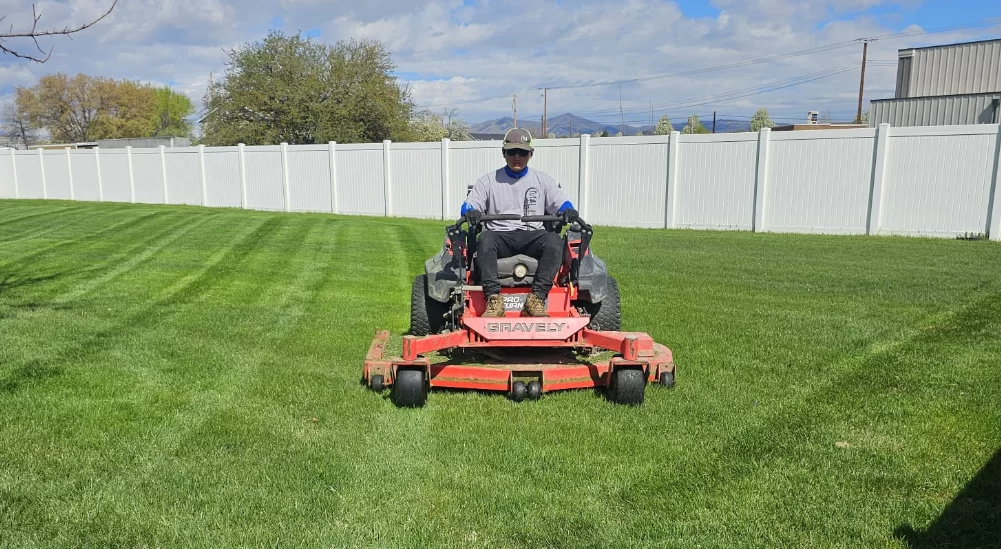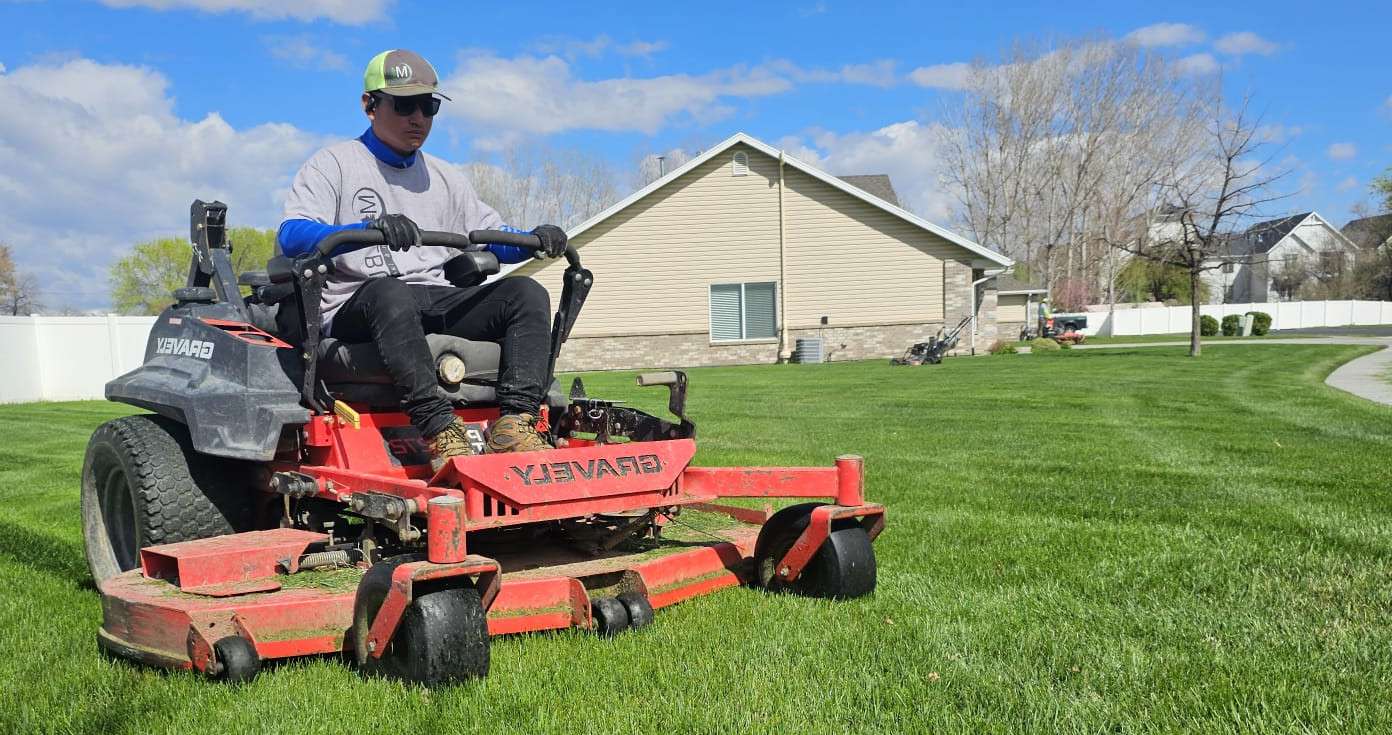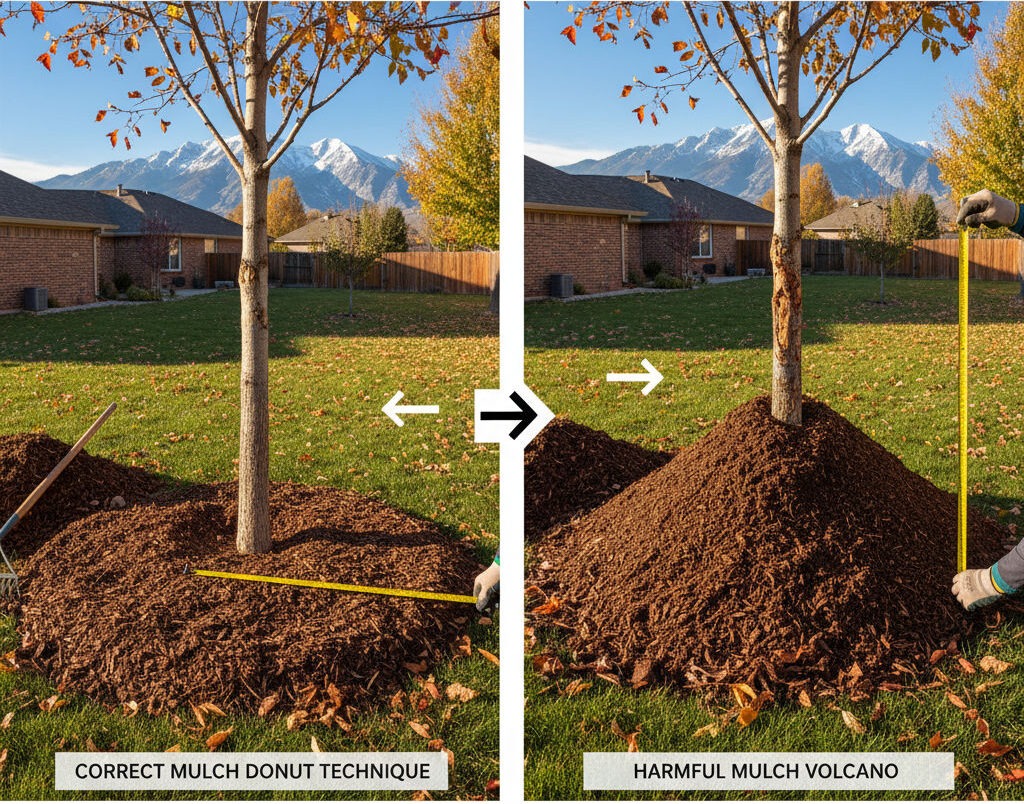A lush, green lawn is the pride of any homeowner. It enhances curb appeal, provides a comfortable outdoor space, and adds value to your property. However, achieving and maintaining that perfect lawn requires year-round care and attention. This guide will walk you through the essential tips and tricks for every season, ensuring your lawn stays healthy and beautiful from spring through winter.

Ready for a lush, green lawn? Contact Millburn Lawn & Landscape for expert, tailored lawn care services. Whether you need seasonal maintenance, fertilization, or a full lawn renovation, we’ve got you covered. Reach out today!
Spring Lawn Care: Setting the Foundation for Growth
Early Spring Cleanup
As the snow melts and temperatures rise, it’s time to start preparing your lawn for the growing season. Begin with a thorough cleanup, removing any debris, leaves, and dead grass that accumulated over the winter. This allows your lawn to breathe and prepares it for the next steps in your lawn care routine.
Aeration and Overseeding
Spring is the perfect time to aerate your lawn, especially if it’s prone to compaction. Aeration involves perforating the soil with small holes to allow air, water, and nutrients to penetrate the grass roots. Follow up with overseeding to fill in any bare patches and encourage thick, healthy growth. Choose grass seeds that are appropriate for your region to ensure the best results.
Fertilization and Weed Control
Apply a balanced, slow-release fertilizer in early spring to provide your lawn with the essential nutrients it needs to thrive. This is also the time to apply pre-emergent weed control to prevent crabgrass and other weeds from taking over. Using the right products at the right time is crucial to achieving a lush, green lawn.
Summer Lawn Care: Keeping Your Lawn Green and Resilient
Proper Watering Techniques
During the hot summer months, watering your lawn correctly is key to maintaining its health and color. Water deeply and infrequently, aiming for about 1 to 1.5 inches of water per week. Watering early in the morning helps reduce evaporation and ensures that the grass has time to absorb moisture before the heat of the day.
Mowing Strategies
Keep your lawn looking neat and healthy by mowing at the right height. For most grass types, setting your mower blade to a height of 2.5 to 3 inches is ideal. Avoid cutting more than one-third of the grass height at a time, as this can stress the lawn and lead to brown spots. Sharpen your mower blades regularly to ensure a clean cut.
Summer Fertilization
A light application of fertilizer in early summer can help your lawn withstand the heat and maintain its green color. Choose a fertilizer with a lower nitrogen content to avoid excessive growth, which can make the lawn more susceptible to drought and disease.
Fall Lawn Care: Preparing for Winter
Fall Aeration and Overseeding
As in the spring, fall is an excellent time to aerate and overseed your lawn. This helps repair any damage caused by summer heat and prepares the grass for the cooler months ahead. Aeration in the fall ensures that your lawn’s root system remains strong and healthy, promoting better growth in the spring.
Fertilization for Root Development
Apply a high-potassium fertilizer in the fall to promote root development and prepare your lawn for winter. This type of fertilizer strengthens the grass’s root system, helping it survive the cold and emerge healthy in the spring. Avoid high-nitrogen fertilizers in the fall, as they can encourage unwanted growth that won’t withstand winter conditions.
Leaf Cleanup and Disease Prevention
Regularly remove fallen leaves from your lawn to prevent them from smothering the grass and creating a breeding ground for mold and diseases. Use a rake or leaf blower to keep your lawn clean and allow sunlight to reach the grass.
Winter Lawn Care: Protecting Your Lawn
Minimize Foot Traffic
During the winter, grass is dormant and more susceptible to damage. Minimize foot traffic on your lawn to prevent compaction and wear, which can lead to bare spots in the spring. Encourage family and visitors to use walkways and other hard surfaces instead of walking on the grass.
Snow Management
If you live in an area with heavy snowfall, it’s important to manage snow accumulation on your lawn. Avoid piling snow in one area, as this can create uneven melting and lead to waterlogged soil. Gently spread out snow piles to promote even melting and prevent damage to the grass.
Early Spring Preparation
As winter draws to a close, start planning your early spring lawn care routine. Take note of any areas that may need extra attention, such as bare spots or compacted soil. Having a plan in place will help you hit the ground running when the weather warms up.
This detailed guide is designed to provide homeowners with practical, actionable advice for maintaining a lush, green lawn throughout the year. By following these seasonal tips, you can ensure your lawn stays healthy, vibrant, and the envy of the neighborhood.




